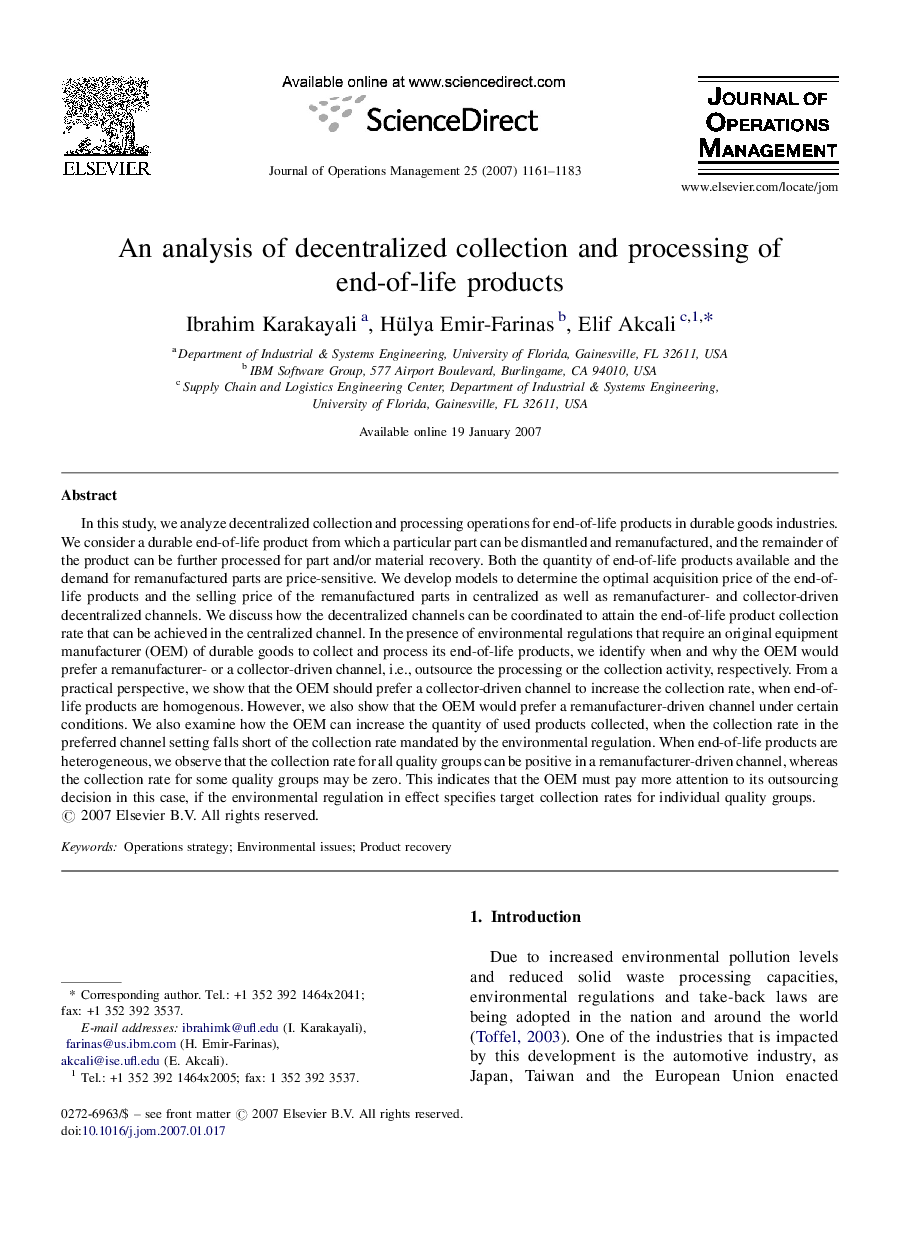| کد مقاله | کد نشریه | سال انتشار | مقاله انگلیسی | نسخه تمام متن |
|---|---|---|---|---|
| 1032014 | 943106 | 2007 | 23 صفحه PDF | دانلود رایگان |

In this study, we analyze decentralized collection and processing operations for end-of-life products in durable goods industries. We consider a durable end-of-life product from which a particular part can be dismantled and remanufactured, and the remainder of the product can be further processed for part and/or material recovery. Both the quantity of end-of-life products available and the demand for remanufactured parts are price-sensitive. We develop models to determine the optimal acquisition price of the end-of-life products and the selling price of the remanufactured parts in centralized as well as remanufacturer- and collector-driven decentralized channels. We discuss how the decentralized channels can be coordinated to attain the end-of-life product collection rate that can be achieved in the centralized channel. In the presence of environmental regulations that require an original equipment manufacturer (OEM) of durable goods to collect and process its end-of-life products, we identify when and why the OEM would prefer a remanufacturer- or a collector-driven channel, i.e., outsource the processing or the collection activity, respectively. From a practical perspective, we show that the OEM should prefer a collector-driven channel to increase the collection rate, when end-of-life products are homogenous. However, we also show that the OEM would prefer a remanufacturer-driven channel under certain conditions. We also examine how the OEM can increase the quantity of used products collected, when the collection rate in the preferred channel setting falls short of the collection rate mandated by the environmental regulation. When end-of-life products are heterogeneous, we observe that the collection rate for all quality groups can be positive in a remanufacturer-driven channel, whereas the collection rate for some quality groups may be zero. This indicates that the OEM must pay more attention to its outsourcing decision in this case, if the environmental regulation in effect specifies target collection rates for individual quality groups.
Journal: Journal of Operations Management - Volume 25, Issue 6, November 2007, Pages 1161–1183